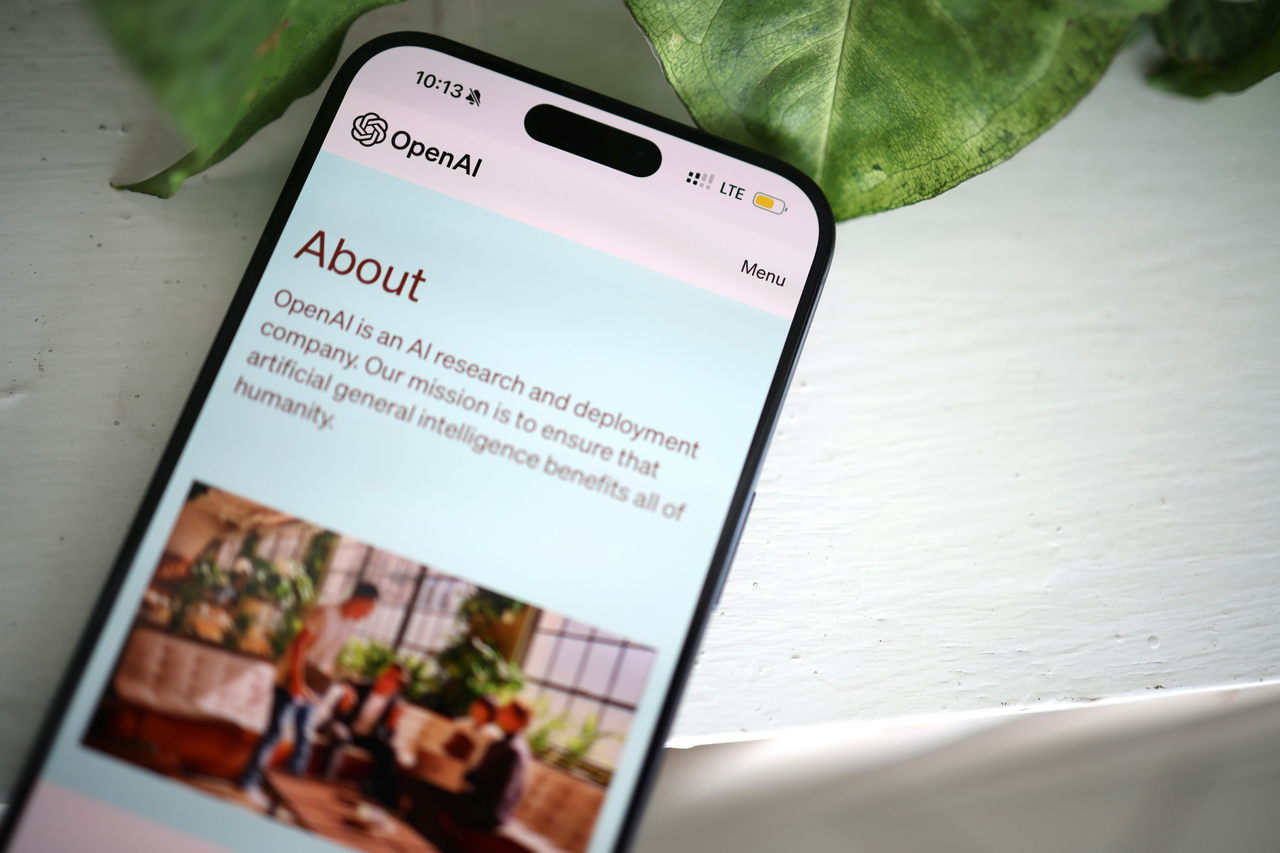What is ChatGPT? An Overview of Artificial Intelligence
ChatGPT is an advanced AI chatbot equipped with sophisticated natural language processing (NLP) and artificial intelligence, enabling it to engage in human-like conversations and assist with various tasks. ChatGPT is one of the most prominent generative AI tools available today, known for its ability to produce human-like text and enhance productivity across various fields. This generative AI tool can answer questions, help compose text, generate code, and more.
Currently available for free, ChatGPT also offers a premium subscription called ChatGPT Plus, introduced by OpenAI in February 2023. This paid version provides users with access to the latest models, exclusive features, and updates.
ChatGPT operates similarly to automated chat services on customer service websites, allowing users to ask questions and seek clarification on their responses. The “GPT” in ChatGPT stands for “Generative Pre-trained Transformer,” a technology that underpins how it processes and generates replies.
ChatGPT is trained using reinforcement learning, incorporating human feedback and reward models to evaluate and rank responses. This iterative feedback loop helps enhance its performance, allowing the AI to continuously improve the quality of its responses through machine learning.
What Can You Do with ChatGPT? Exploring Its Uses and Applications to Generate Human-Like Responses
ChatGPT provides a wide range of functions beyond answering straightforward questions. It can compose essays, engage in philosophical discussions, solve math problems, and even write code. ChatGPT responds to user inquiries by generating answers based on a vast array of online content, highlighting both its speed and potential inaccuracies.
ChatGPT can explain concepts and provide summaries. It’s a valuable tool for students seeking additional support or clarification on their studies. With ChatGPT’s assistance, you can practice new languages, get translations, and improve your language skills. ChatGPT can also manage conversations by recognizing and rejecting inappropriate requests, ensuring a safe and respectful interaction.
Use ChatGPT to brainstorm ideas for projects, whether they are creative, business-related, or academic. It can help you think outside the box and explore new possibilities.
Work through challenges or obstacles by discussing potential solutions with ChatGPT. It can offer different approaches and strategies.
But its uses aren’t limited to grand tasks. For instance, one of my favorite ways to use ChatGPT is for creating practical lists, such as packing lists, grocery lists, and daily to-dos, which help streamline and enhance productivity in everyday life. The potential applications are virtually limitless.
Key Features and Capabilities
ChatGPT is a state-of-the-art conversational AI system that offers a wide range of features and capabilities. Some of its key features include:
Natural Language Processing (NLP): ChatGPT is trained on a massive dataset of text from the internet, enabling it to understand and respond to natural language inputs with remarkable accuracy.
Generative Pre-trained Transformer (GPT): Utilizing the GPT architecture, ChatGPT can generate human-like responses to user inputs, making interactions feel more natural and engaging.
Conversational Interface: ChatGPT excels in conversing with users, answering questions, providing information, and even generating creative content like stories or poems.
Adaptability: One of ChatGPT’s standout features is its ability to adapt to different language styles, tones, and contexts, making it a versatile tool for various applications, from casual chats to professional inquiries.
Customizability: ChatGPT can be fine-tuned for specific tasks and domains, allowing users to tailor its responses to meet their unique needs, whether for customer service, educational support, or creative projects.
Is ChatGPT Safe?

As AI chatbots like ChatGPT become more prevalent, various concerns have arisen regarding their impact on human intelligence, misinformation, and privacy. Here’s a closer look at these issues:
Effect on Human Intelligence and Learning
Academic Concerns: One major worry is that chatbots could contribute to academic dishonesty. The ability of ChatGPT to generate essays and other written content rapidly has led some educators to fear that students might misuse the technology, hindering their development of writing skills. Initially, some school districts responded by blocking access to ChatGPT.
Adaptation in Education: Despite these concerns, many educational institutions have begun to embrace AI technology. Some schools and universities have started incorporating AI-related coursework into their curricula, recognizing the potential benefits of understanding and working with AI tools.
Spread of Misinformation
Accuracy of Information: ChatGPT has been noted to produce “plausible-sounding but incorrect or nonsensical answers occasionally.” OpenAI acknowledges this limitation and advises users to verify the information provided by AI chatbots.
Encouraging Verification: ChatGPT explicitly states that its responses are not meant to be taken as absolute facts, emphasizing the importance of cross-checking information with reliable sources.
Ethical and Privacy Concerns in Artificial Intelligence
Training Data and Copyright: Ethical concerns surround the data used to train AI models. OpenAI scraped content from the internet to train ChatGPT without seeking permission from content creators, raising issues related to copyright and intellectual property.
Privacy and Data Usage: Using user data to refine and train AI models has also raised privacy concerns. OpenAI has addressed these by allowing users to turn off their chat history and providing options to disable data training for further model improvements.
Ensuring User Safety
Privacy Controls: OpenAI offers several safeguards for users concerned about privacy. You can turn off chat history and opt out of having your data used to train future models.
Ongoing Ethical Discussions: The ethical implications of AI chatbots are still under active debate. While privacy settings are available, broader discussions about AI technology’s moral and ethical ramifications continue to evolve.
In summary, while ChatGPT and similar AI tools present exciting opportunities, they also come with significant concerns. Understanding and addressing these issues—whether related to educational integrity, misinformation, or privacy—is crucial for ensuring that AI technologies are used responsibly and effectively.
Is ChatGPT Available for Free?
ChatGPT is available for free and offers a wide range of capabilities, from answering general knowledge questions to assisting with complex tasks such as writing, coding, and even problem-solving. Users can easily access the accessible version of ChatGPT without any upfront cost, making it a valuable tool for individuals, students, professionals, and businesses alike. The free version of ChatGPT operates using OpenAI’s GPT-3.5 model, which is still incredibly powerful and versatile. However, OpenAI offers a monthly subscription option called ChatGPT Plus for $20. Paid users get to use the more advanced GPT-4 model, which is more accurate, generates more detailed responses, and has improved reasoning capabilities compared to GPT-3.5. Free users may experience slower response times during peak usage or temporary unavailability. ChatGPT Plus subscribers enjoy faster and more reliable service.
While the subscription cost might seem high to some, it matches the pricing of other AI services, such as Microsoft Copilot Pro and Google One AI Premium, which are Microsoft’s and Google’s paid AI offerings.

How Can You Access ChatGPT?
On April 1, 2024, OpenAI made accessing ChatGPT even more convenient by removing the login requirement. Now, anyone can visit chat.openai.com and start using ChatGPT immediately. Additionally, users can download the ChatGPT app on both iPhone and Android devices, making it accessible on the go.
Without needing an account, you can jump right into conversations with ChatGPT, asking questions just as you would with a search engine like Google. You can ask as many questions as you like and explore various topics effortlessly.
However, creating an OpenAI account still provides added benefits. With an account, you can:
Save and review your chat history for easy reference.
Access custom instructions to personalize your ChatGPT experience.
Use GPT-4o for free, which is the latest and most advanced version of the model.
Signing up for an OpenAI account is simple and free. You can even use your existing Google login for a faster registration process.
Can You Download a ChatGPT App?
Yes, OpenAI offers an official ChatGPT app for both iPhone and Android devices, providing easy access to the AI chatbot from your mobile phone. It’s essential to download the correct app, developed by OpenAI, as numerous unauthorized and fake versions are available on the Apple App Store and Google Play Store. These copycat apps often mislead users and may have privacy risks or hidden charges.
In addition to the mobile apps, there’s also a ChatGPT app for macOS, designed for easy desktop access via a quick keyboard shortcut. Initially, this version was only available for ChatGPT Plus subscribers, but OpenAI recently made it accessible to all users. This makes accessing ChatGPT even more convenient across devices, whether on a smartphone or a desktop.
Though these apps mirror much of the functionality available on the browser-based version, the dedicated apps make it simpler to use ChatGPT on the go, making it an essential tool for quick answers, text generation, or creative assistance from anywhere.
What Does ChatGPT Represent?
“As Google has become the way people describe searching the Internet, ChatGPT has quickly turned into the shorthand for how people use AI,” says Tom Taulli, author of several AI-focused books, including Generative AI: How ChatGPT and Other AI Tools Will Revolutionize Business. But what does “ChatGPT” actually stand for?
The “GPT” in ChatGPT stands for Generative Pre-trained Transformer, a series of large language models developed by OpenAI that use deep learning to generate text that mimics human conversation. While that’s quite a mouthful, the name is commonly shortened to “ChatGPT,” with “Chat” referencing its interactive, conversational nature.
As of September 2023, ChatGPT-3.5 is the free, basic version available to users. ChatGPT Plus offers access to the latest model, ChatGPT-4, for $20 per month for those seeking more advanced features and faster response times.
Interestingly, OpenAI launched ChatGPT in November 2022 with minimal marketing and limited expectations for its success. However, the tool quickly gained massive popularity, emerging as a dominant force in the AI landscape—a trend that shows no signs of slowing down.
How Does ChatGPT Work?

ChatGPT operates on OpenAI’s large language model (LLM) architecture called Generative Pre-trained Transformer (GPT). Initially, the accessible version of ChatGPT used a fine-tuned GPT-3.5 model, but in May 2024, OpenAI upgraded it to GPT-4o. Currently, free users have access to GPT-4o mini, while subscribers of ChatGPT Plus benefit from full access to GPT-4, GPT-4o mini, and GPT-4o. ChatGPT Plus users also get priority access to GPT-4o, even when the system is at capacity.
ChatGPT is one of the leading generative AI tools, leveraging advanced machine learning algorithms to produce human-like text responses.
These generative AI models are trained using vast datasets, including text from websites, books, and news articles. ChatGPT processes user questions through a method known as tokenization, which breaks the text into smaller parts, allowing the model to analyze the relationships between words, understand grammar, and comprehend the context of the conversation.
Once ChatGPT interprets the context of a user’s query, it matches it with information from its knowledge base. It then begins generating a response token by token, explaining why responses appear in real-time rather than all at once.
According to experts like AI authors Farley and Cenedella, ChatGPT uses patterns it has learned from its vast dataset to predict and generate text responses. Similar to predictive text on a phone but on a much larger scale, it can anticipate not just individual words but entire sentences, paragraphs, or even long documents. Users have even employed ChatGPT to generate everything from essays to whole books.
Technical Details
ChatGPT is built on top of the GPT-3.5 and GPT-4 language models, which are trained on a massive dataset of text from the internet. The model uses a combination of natural language processing (NLP) and machine learning algorithms to generate human-like responses to user inputs. Some of the technical details of ChatGPT include:
Model Architecture: ChatGPT employs transformer architecture, a type of neural network specifically designed for natural language processing tasks. This architecture allows the model to understand and generate coherent responses based on the input data.
Training Data: The model is trained on an extensive dataset that includes various topics, styles, and genres, enabling it to handle diverse queries and generate relevant responses.
Model Size: With approximately 175 billion parameters, ChatGPT is one of the largest language models in the world. This vast size contributes to its ability to generate detailed and contextually appropriate responses.
Computing Power: Running ChatGPT requires significant computing power, which is provided by OpenAI’s robust cloud infrastructure. This ensures the model can process and generate responses efficiently, even under heavy usage.
Is ChatGPT Better than a Search Engine?
ChatGPT and search engines serve distinct purposes, and which one is better depends on what you’re looking for.
ChatGPT is an AI chatbot designed for interactive conversations, making it an excellent tool for explaining complex topics, generating content, or answering specific questions in a conversational style. It can pull information from its model, and as of May 2024, the accessible version of ChatGPT also retrieves information from the web. However, it will provide limited sources rather than endless search results. For instance, if you ask ChatGPT for the current weather in Singapore, it will browse a few relevant sources and offer a response with links, streamlining the process.
On the other hand, search engines like Google index millions of web pages and are your go-to tool when seeking up-to-date, accurate information or wanting access to various sources. Search engines allow you to explore numerous sites, compare different perspectives, and choose the most relevant information.
If you want detailed, in-depth explanations without sifting through multiple websites, ChatGPT is an excellent option. However, a search engine is ideal when you’re looking for comprehensive, real-time information across numerous sources.
For users who want the advantages of both platforms, AI search engines combine these features to offer conversational answers and comprehensive search capabilities.
What are ChatGPT’s Limitations?
Despite its advanced abilities, ChatGPT has several notable limitations. One challenge users face is that the model doesn’t always interpret the intent of a question correctly, sometimes requiring you to rephrase or reword questions multiple times to get a helpful response. This can make interactions less efficient.
Another limitation is the quality of its responses. While ChatGPT’s answers often sound plausible and articulate, they can sometimes lack accuracy or practicality. The model tends to produce verbose explanations that may not be directly useful. In some instances, it doesn’t ask for clarification on vague questions but instead guesses, which can lead to irrelevant or incorrect responses.
ChatGPT, like other generative AI models, is prone to hallucinations, where it provides factually inaccurate or nonsensical information, even though it may sound convincing. This is especially risky when users rely on it for precise, real-world information. Although ChatGPT can provide valuable insights, it still requires users to think critically and cross-reference to avoid accepting misinformation.
Ultimately, while ChatGPT is powerful, its current limitations highlight the importance of human oversight and verification in using AI-generated content.
Development and Integration
ChatGPT was developed by OpenAI, an AI research company founded by Elon Musk, Sam Altman, and others. The development of ChatGPT involved a team of researchers and engineers who worked on designing and training the model. Some of the key milestones in the development of ChatGPT include:
Research and Development: The journey began in 2020 when OpenAI researchers started exploring the potential of transformer models for conversational AI. This phase involved extensive research and experimentation to refine the model’s capabilities.
Model Training: Training the model on a massive dataset of text from the internet was a monumental task that took several months to complete. This process involved fine-tuning the model to ensure it could generate accurate and relevant responses.
Testing and Evaluation: Before its public release, ChatGPT underwent rigorous testing and evaluation on various tasks, including conversational dialogue, question-answering, and text generation. This phase was crucial for identifying and addressing any limitations.
Launch: ChatGPT was officially launched in 2022 and quickly gained popularity as a powerful conversational AI tool. Its success is a testament to the hard work and dedication of the OpenAI team.
Future Developments and Updates
ChatGPT is a rapidly evolving technology, and OpenAI is continuously working on improving and updating the model. Some of the future developments and updates that can be expected from ChatGPT include:
Improved Accuracy: OpenAI is focused on enhancing the accuracy of ChatGPT’s responses, particularly in areas such as fact-checking and common sense reasoning. This will help reduce the occurrence of incorrect or nonsensical answers.
Increased Customizability: Future updates will offer more customization options, allowing users to tailor ChatGPT to their specific needs. This could include adjusting the model’s tone, style, and response patterns to better suit different applications.
Multimodal Interaction: OpenAI is exploring the possibility of adding multimodal interaction capabilities to ChatGPT, such as voice and image recognition. This would enable more dynamic and interactive user experiences.
Ethics and Safety: Ensuring the responsible and safe use of AI is a top priority for OpenAI. The company is developing comprehensive ethics and safety guidelines for ChatGPT, aiming to address concerns related to misuse, bias, and privacy.
By continuously refining and expanding ChatGPT’s capabilities, OpenAI aims to make this powerful AI tool even more useful and accessible for a wide range of applications.






